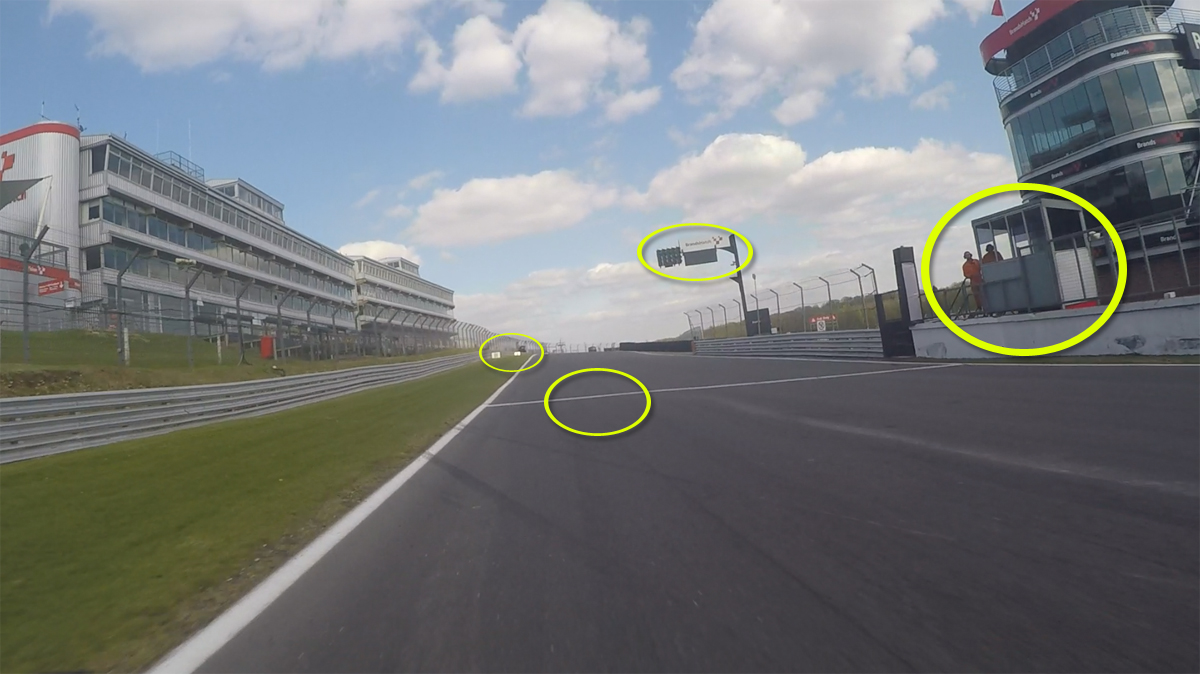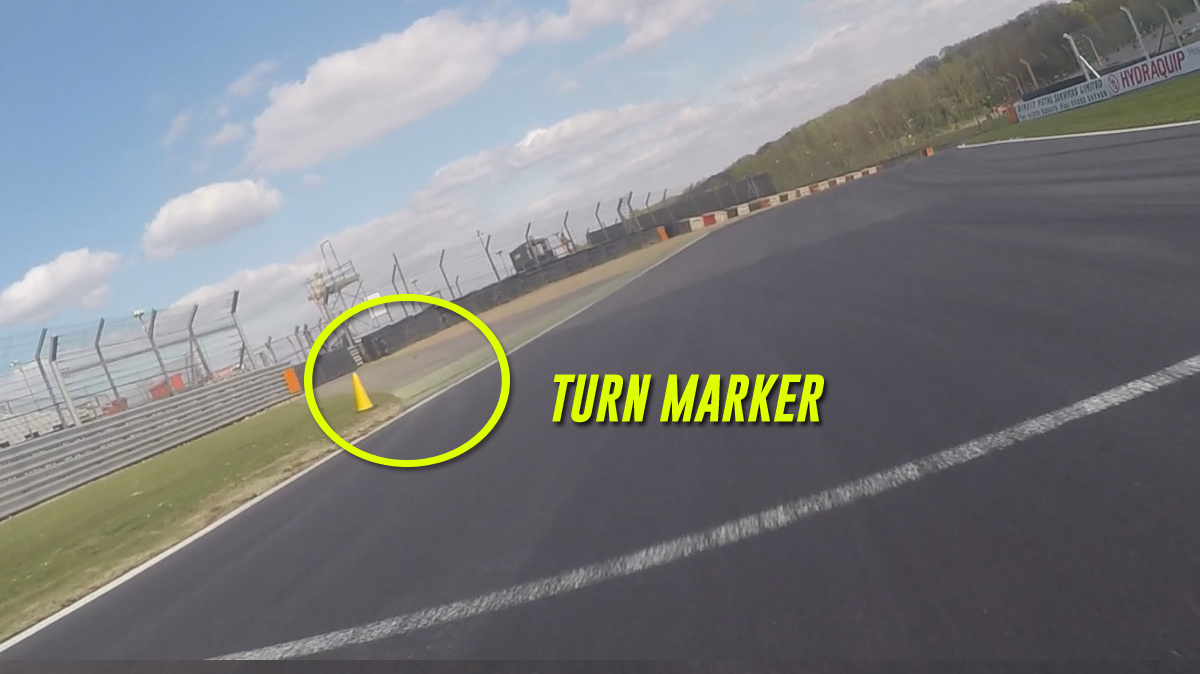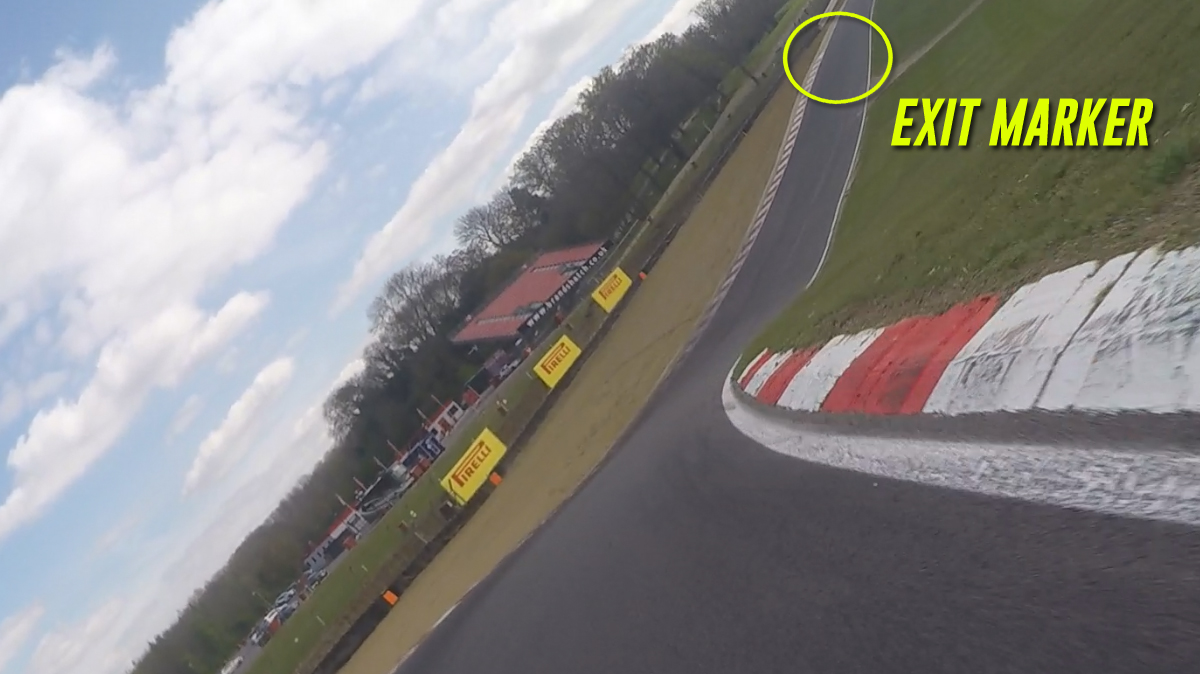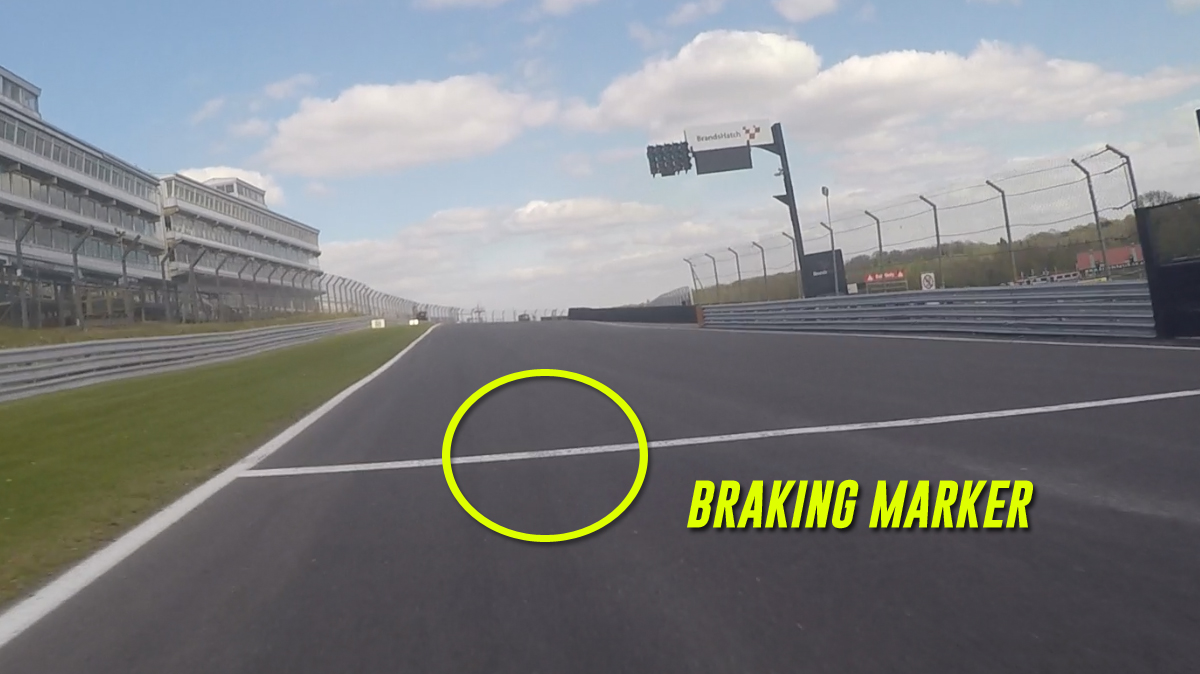Key Reference Markers for Track Riding (and the Order of Importance)

Visual skill is pretty important in motorcycle performance riding.
In truth, all things being equal a rider displaying good visual skill will be able to reach a higher level than one displaying poor visual skill every single time.
A key part of visual skill is the use of reference markers (or reference points), which lay out the spots you want to hit around the track and create the dot-to-dot map you’re looking to follow.
In this article I want to cover the main markers you’re looking to find, as well as the order of importance I feel they sit in.
For this we’re going to go from least important, to most important.
Here we go…
#4) Turn/Entry Marker

In last place we have Turn Markers. The turn marker is the point at which you want to begin steering, leaning the bike over and entering the corner.
Knowing exactly where you want to begin steering is a great way to build consistency with the lines you create into, through and out of the corner.
Also having this reference means that it’s easier to test and change your corner entry approach precisely because you have a reference for your existing approach.
However, the biggest reason to have them is because of the lesson they provide less experienced riders.
A trait of newer riders to the track is the tendency to drift into a corner too early and create a shallow entry line which spoils the exit (because you’re waiting longer to get back to the throttle).
Having a solid turn marker gives you a point of reference to aim for and ensures you stay on a more correct line which can, in some cases, massively open up the exit for you and bring with it a number of benefits.
For this reason I would always recommend newer riders look to work with turn markers.
However, as you get more experienced you will begin to place less importance on them, because as you will find the turn marker can change with speed and/or track position. For instance when performing an overtake.
I’ve heard some high end racers omit the use of these markers altogether, instead opting to judge corner entry timing based on the picture they see ahead of them in the moment.
That said, I personally still look to use turn markers wherever I can. This is because it helps me continue to practice good lines, particularly on less familiar tracks, as well as attain a greater level of consistency.
In which case I would still recommend you look to adopt them for the same reasons.
#3) Exit Marker

Next in our order of importance we have exit markers.
Exit markers are important because they help you utilise the often most important part of the corner. The exit.
If you’re not getting your eyes up and out to corner exit from around the apex (preferably before you hit it) then you are likely leaving speed on the table.
This part of the visual routine was a huge revelation for me, and when I was taught how to correctly use my eyes through the mid and exit phase of a corner I realised I could be picking my bike up and driving much earlier in a lot of places.
Having an exit marker in place gives you something to look for and it shows you the space you really have.
An exit marker could be a solid object in a spot you want to go next (tyre wall, yard marker, cone etc), or you may just choose to look right up the track if you exiting onto a long straight.
In any case, correctly using your eyes in conjunction with a solid exit marker is an important factor in maximising your exit drive.
#2) Braking Marker

Next up, braking markers.
They are most important in the big braking zones because it is in these sensory rich parts of the track that you want to be most in control, but also because it’s where most speed can be won (or lost).
If you don’t have braking markers in place in the big braking zones it’s likely that you’ll spend a lot of time coasting and being too tentative with the throttle down the straight, and slowing down with little to no brakes when you eventually DO apply them.
This is wasted time.
Having a solid braking marker to aim for means you have a place you can confidently accelerate to and begin braking from.
Like I said, these are most important in the big braking zones, but I personally try to find markers in any place where I’m performing any sort of meaningful braking effort, once again because it gives me a reference for what I’m currently doing (in case I want to change it) and because of the consistency benefits it brings.
#1) Apex

Finally we have the apex.
The apex is THE most important marker to have, and hit, because it’s typically the point where you can begin standing the bike up and applying more throttle.
If your apex position is poor, or you’re not hitting it correctly, then you’re going to be costing yourself time.
If it’s too early then you’ll restrict your exit with how early you can stand the bike up and drive out. If it’s much later than the corner requires, you’re going to end up over-slowing at corner entry and costing yourself time there.
If you look at a wide variety of bikes that ride the track and/or race, braking a turning markers can differ by sizeable amounts, but the apex remains largely the same.
Standing the bike up and driving hard is typically where less experienced track riders can gain a lot of time, and it’s the apex position and your ability to hit it that has the biggest bearing on that.
If you don’t have a solid apex you’re aiming for, chances are you won’t hit the correct one. Not consistently at least.
Finding and Using these Markers: Start with the End
A good way of constructing a corner is to start with the exit in mind and work backwards.
Ask what you want from the exit and what’s most important, then pick an apex and exit marker that creates the line that gets you that result.
From there, find a braking marker that lets you slow down in time to create the line you want at corner entry, and preferably a turn marker to help build that consistency and the correct approach to the apex.
Like I said at the start, vision is very important to your efforts if reaching a good level of riding is important to you. Find and use these markers I’ve laid out for you here and you WILL begin to see improvements in multiple areas of your riding.
